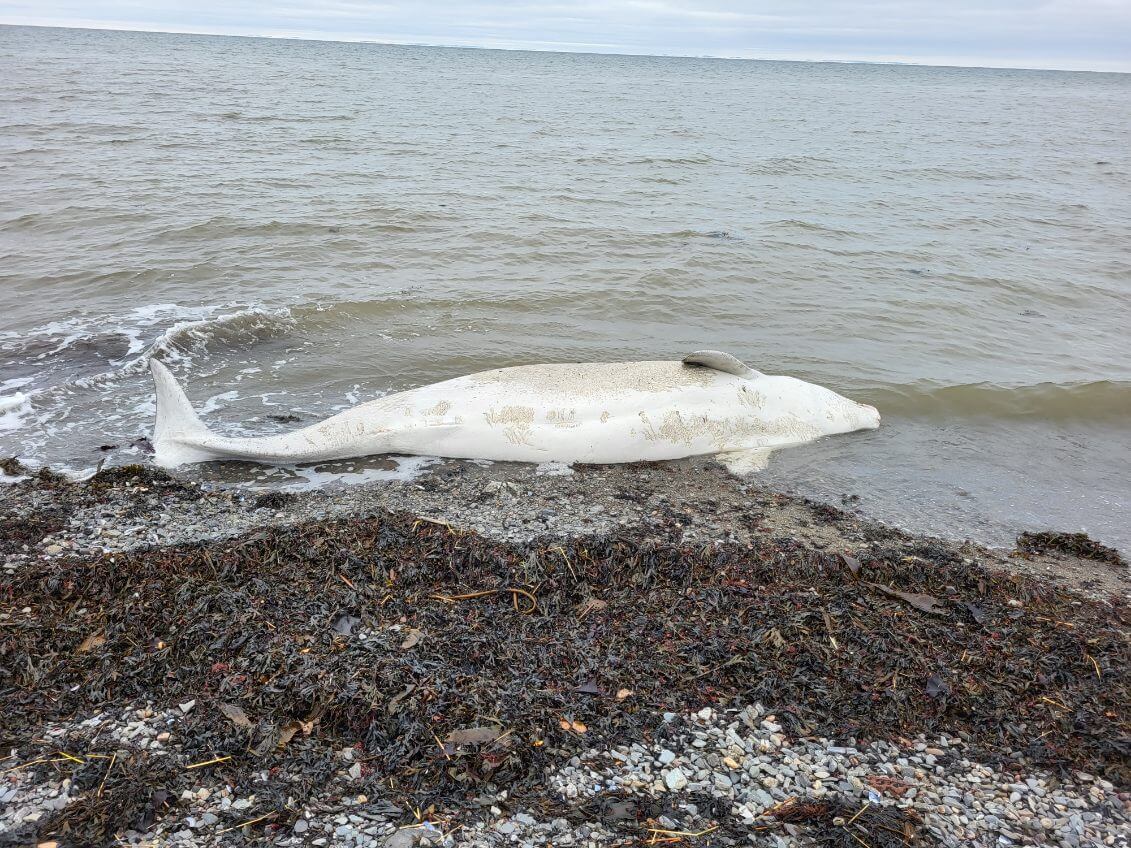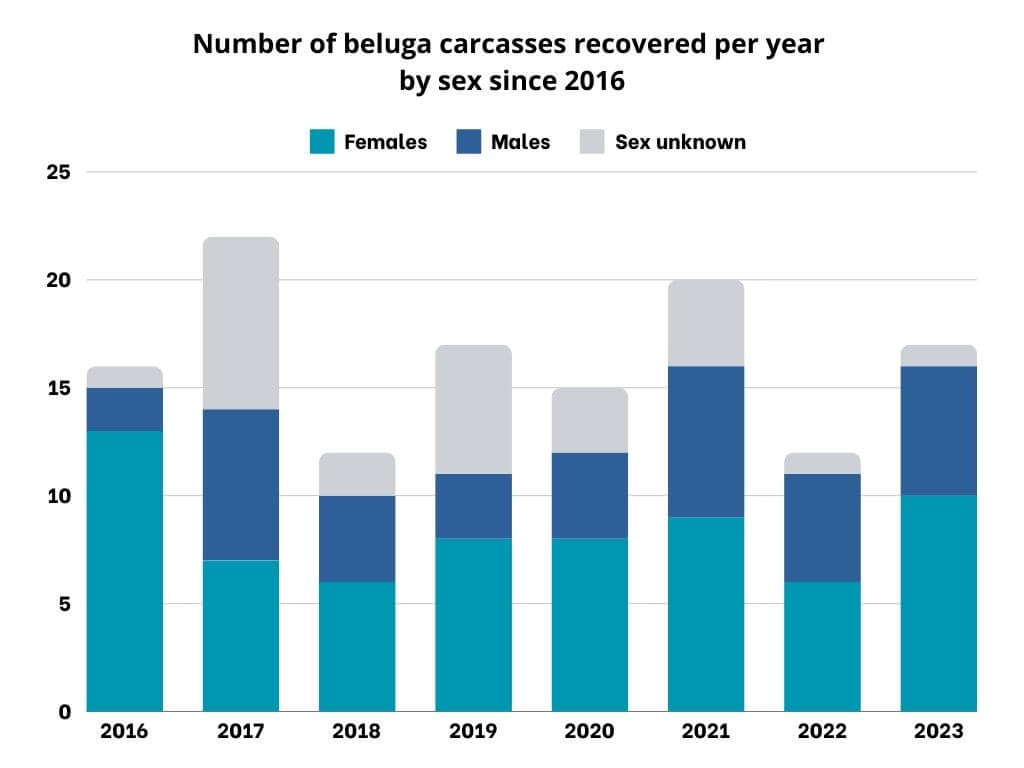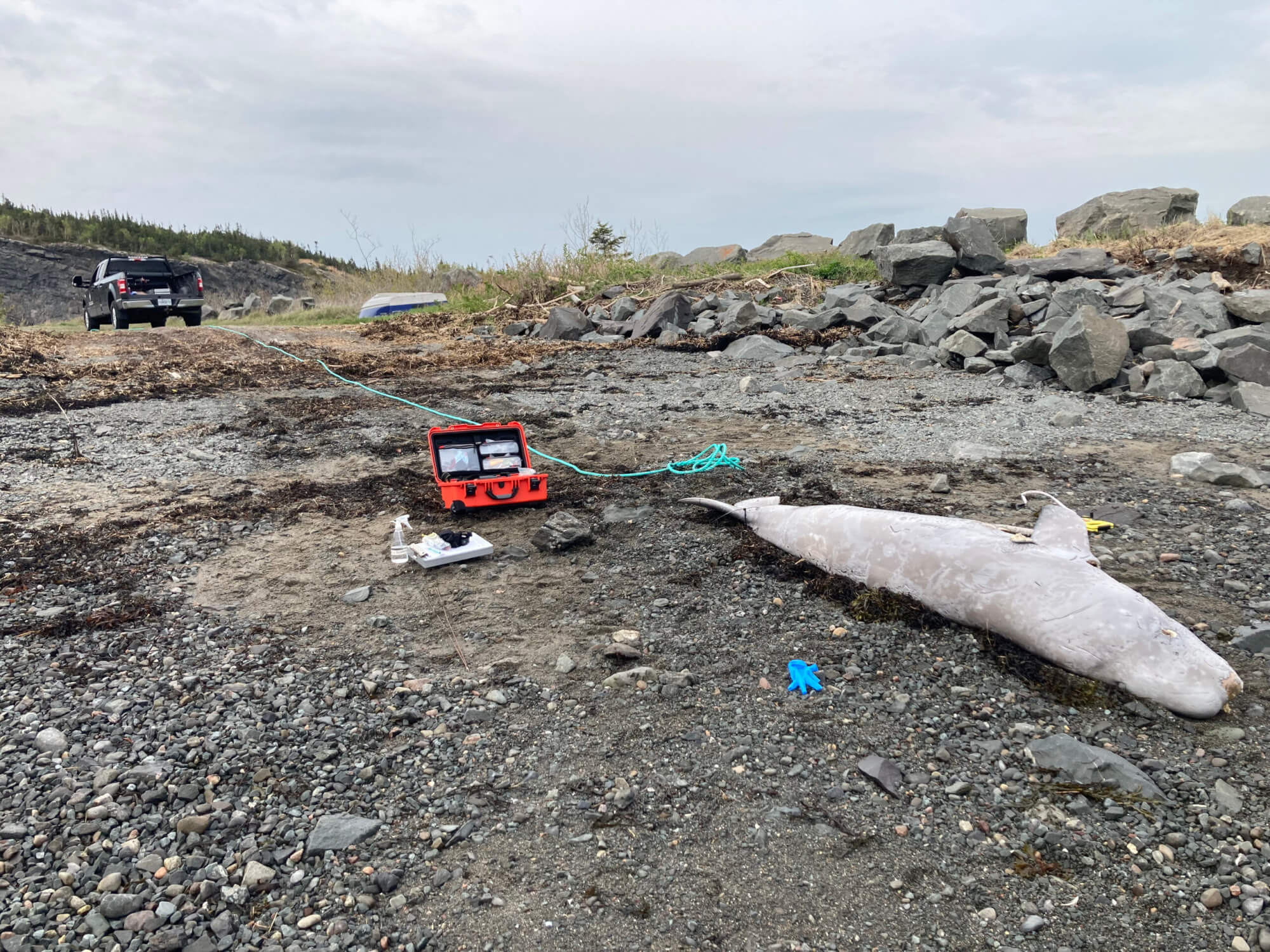According to data from the Quebec Marine Mammal Emergency Response Network (QMMERN), last year saw the recovery of 17 beluga carcasses. The majority of these animals were females, a worrying trend that has continued for several years now.
The first beluga carcass of 2024 was discovered on March 24 on the shores of Saint-Ulric in Quebec’s Bas-Saint-Laurent region. It was a male. In 2023, the first carcass reported was that of a young female and occurred around the same date.
Another year, another worrying report
Of the 17 beluga carcasses reported to QMMERN last year, there were 10 females and 6 males. The advanced state of decomposition of one of the carcasses made it impossible to determine the sex of the animal.
For the scientific community, the high proportion of females in the carcass tally is a significant concern. The cause of female mortality is also worrying. Numerous cases of dystocia (calving complications) have been reported in female carcasses in recent years. However, the reasons for these complications are still a mystery. St. Lawrence belugas are currently being affected by a broad array of stressors, any number of which could be responsible.
Only one calf was amongst the carcasses found in 2023. Why was it no longer with its mother?
On average, young belugas stay with their mothers for nearly three years to be nursed and to learn essential survival skills. Premature mother-calf separation can therefore lead to mortality in the latter. This is also the hypothesis put forward to explain the presence of this small carcass on the shores of Rimouski last July.
Working as a team for science
Of the 17 carcasses recovered by QMMERN, nine were transported to Quebec’s wildlife health centre (CQSAS) in Saint-Hyacinthe.
One of the females sent to the CQSAS veterinary team died of trauma. Indeed, necropsy results indicate that a collision with a boat might have been the cause of death, as the carcass showed pronounced lacerations and deep wounds. A second female is believed to have suffered heart failure. The cause of death of the other belugas still remains to be determined by the team of Stéphane Lair, CQSAS director and professor at University of Montréal’s Faculty of Veterinary Medicine.
Seven other carcasses were sampled directly in the field by QMMERN’s mobile teams. To advance beluga research, samples of all types are needed, including jaws, teeth, and pieces of fat or skin. This is why they are quickly sent for analysis to Fisheries and Oceans Canada and will be used in various research projects on the St. Lawrence beluga.
The majority of carcasses reported to QMMERN in 2023 were found on the shores of the Bas-Saint-Laurent region. Three animals washed ashore in the Côte-Nord region, two in Gaspésie and one in Charlevoix. One carcass was also reported in Prince Edward Island.
To report a marine mammal stranded on shore or adrift in the water, contact QMMERN immediately at 1-877-722-5346.







